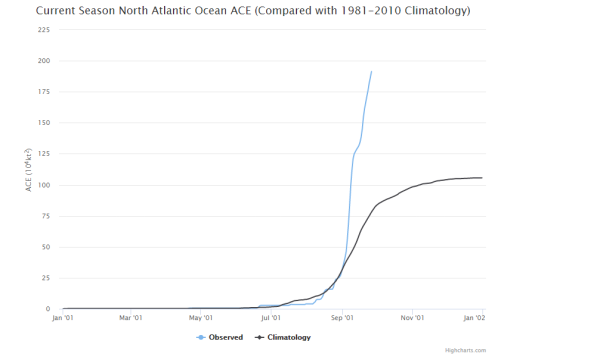“Suddenly what was once thought to be a problem confined to the third world has arrived in southern Europe.” — Euronews.
*****
We’ve been taught that human-caused climate change through fossil fuel burning only affects poor people. That it only affects the third world. That if you’re rich, or if you live in places like the U.S. and Europe, you’re safe — or at least safer.
We’ve been misinformed.
Climate Change in Our Front Yard
Here, on this blog, again and again, we’ve been warning that climate change impacts EVERYONE. That no-one is really safe from either its direct or systemic impacts. From the subsistence farmer in Africa to the Wall Street hedge fund manager, the damage is ultimately equally bad.
The reason is that the worsening climate change related impacts of sea level rise, extreme weather, acidifying and anoxic oceans are ultimately so far reaching that you can’t call any place on Earth realistically safe from harm. And even if you do avoid the barrage of these varied impacts personally, the damage from rising levels of warming is eventually so deep and widespread that there is serious risk of collapse to the various systems civilization relies on to function — like water, power, transportation, and food supply.
(Despite popular misconception, the wealthier countries of the world are not immune to or even really very resilient to the impacts of climate change. We are seeing this start to bear out now in numerous places to include Southeastern Europe. Namely, the Iberian Peninsula where drought is severely impacting Portugal and Spain. Image source: Global Drought Monitor.)
Though the effects may well be milder at the present 1.2 C warming than they would be at 2 C, 3 C, 5 C or more, they are starting to hit now. And they are hitting indiscriminately across broad regions from Canada, to California, to New York City, to New Orleans, to Brazil, to Bangladesh, to Russia, to Puerto Rico, to India and China, and to more far-flung and wildly varied locations than we can list here. The systemic collapse of Puerto Rico due to a global warming amplified hurricane, can be seen as a relative microcosm to what’s in store for broader global civilization if we don’t get our act together in reducing carbon emissions zero and then net-negative , limiting future warming to more manageable levels, and hardening societies to warming related impacts as rapidly as possible.
Severe Drought in Spain and Portugal
This week, just one more story of catastrophic climate change related impacts focuses on the Iberian Peninsula in Europe. 2017 is presently Spain’s third driest year on record. Following an abnormally dry 4-year period, the situation is starting to get critical. The Douru River, which is basically the Spanish wine-growing region’s Mississippi, is 60 percent dry. Massive reservoirs like the Cuerda del pozo are empty. Hydroelectrical supplies have been cut by 58 percent. And wildfires and crop failures have run rampant with the worst grape harvest in decades leading to a global shortage of wine.
In Portugal, the driest October in 20 years has spurred a government campaign to conserve water — asking people to turn off the taps immediately rather than leave them running. In some places of the country, water is having to be shipped in by truck as local sources fail. The Prime Minister of the country is stating that a water miracle is needed to relieve drought conditions.
These impacts follow a deadly wildfire outbreak in October that killed 44 people and injured 71. One of the region’s worst on record that adds to the context of fires like the Fort McMurray Fire in Alberta and the recent Northern California wildfires that destroyed more than 10,000 buildings.
Rain in the Forecast, But Global Warming Will Bring Worsening Droughts to the Region
Human-caused global warming increases the likelihood of extreme drought by increasing the rate of both precipitation and evaporation. Because this effect is uneven, as the world warms, the prevalence tips toward the extremes. In other words, more of the rain we receive falls less frequently but in heavier events. In addition, rising temperatures enhance the onset and intensity of drought.
For Spain and Portugal, climate zones are moving north. This means that desert-like temperatures and conditions from across the Med in the Sahara are more frequently invading. A reality that most of Southern Europe will eventually face if the Earth continues to warm. That said, forecasts for this winter call for some relief in the form of increased precipitation. For Spain and Portugal, it couldn’t come too soon. But with conditions having been consistently drier than normal over recent years, it will take a very significant pattern change to alleviate presently severe conditions.
Hat tip to BobinSpain
















